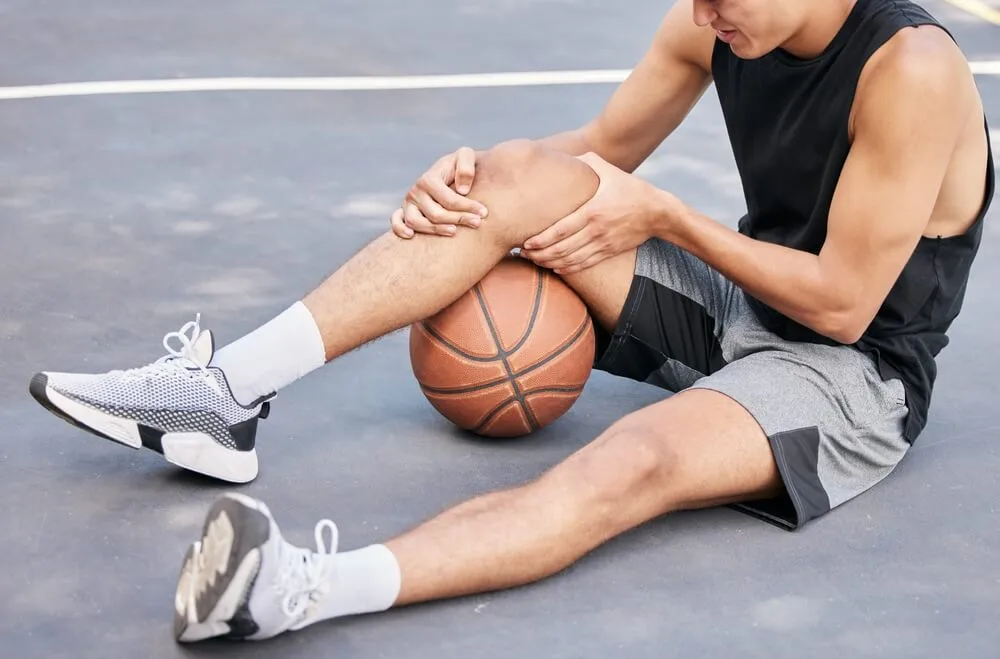How to Recover from Common Basketball Injuries: A Complete Guide

Basketball is a fast-paced, physically demanding sport that requires a combination of speed, agility, and strength. While these dynamic movements make the game exciting, they also increase the risk of injury. From sudden jumps and landings to quick changes in direction, basketball players are vulnerable to a range of injuries, both minor and severe.
Recovering from these injuries properly is crucial not only to get back on the court but also to avoid long-term damage that could hinder future performance. In this article, we will cover some of the most common basketball injuries and provide tips on how to recover effectively, so you can bounce back stronger than ever.
1. Ankle Sprains
Ankle sprains are one of the most common injuries in basketball due to the constant jumping, pivoting, and cutting movements involved. This injury occurs when the ligaments around the ankle are stretched or torn, typically from rolling or twisting the foot. Symptoms include pain, swelling, bruising, and limited mobility.
Immediate Treatment: R.I.C.E. Method
The first step in recovering from an ankle sprain is to follow the R.I.C.E. protocol:
- Rest: Avoid putting weight on the injured ankle to prevent further damage.
- Ice: Apply ice for 15-20 minutes every couple of hours to reduce swelling.
- Compression: Use a compression bandage to support the injured area and limit swelling.
- Elevation: Keep the ankle raised above heart level to promote fluid drainage and reduce swelling.
Recovery Tips:
Once the acute pain and swelling subside, you can begin the recovery process by introducing gentle range-of-motion exercises like ankle circles or toe raises. As you progress, physical therapy exercises such as balancing on one foot or using a resistance band can help restore strength and stability. Ankle braces or taping may also be recommended during the recovery phase to prevent re-injury.
Prevention Strategies:
To reduce the risk of future ankle sprains, focus on ankle-strengthening exercises, such as calf raises or heel walks. Wearing basketball shoes with good ankle support and ensuring proper warm-up routines can also protect against injury.
2. Knee Injuries (ACL, MCL)
Knee injuries, particularly involving the ACL (Anterior Cruciate Ligament) and MCL (Medial Collateral Ligament), are serious and common in basketball. The ACL can tear when a player lands awkwardly, makes a sudden stop, or pivots quickly, while MCL injuries often occur from direct impact to the knee. Symptoms include sharp pain, swelling, instability, and difficulty moving the knee.
Immediate Treatment:
For both ACL and MCL injuries, seek medical attention immediately. Rest is essential, and applying ice can help control swelling. If walking is difficult, crutches or a knee brace may be necessary to limit movement and prevent further damage.
Recovery Tips:
Recovery from an ACL or MCL injury can take several months, especially if surgery is involved. Physical therapy is critical for regaining range of motion, strength, and stability in the knee. Early stages of recovery focus on reducing swelling and pain, followed by exercises that strengthen the quadriceps, hamstrings, and surrounding muscles to support the knee. Functional exercises, such as leg presses and balance training, will be introduced later to restore full athletic performance.
Prevention Strategies:
To prevent knee injuries, it’s essential to strengthen the muscles around the knee, particularly the quads, hamstrings, and glutes. Incorporating exercises like lunges, squats, and agility drills into your routine will help. Additionally, practicing proper landing techniques and wearing appropriate footwear can reduce the risk of injury.
3. Jumper’s Knee (Patellar Tendonitis)
Jumper’s knee, or patellar tendonitis, is an overuse injury caused by repetitive stress on the patellar tendon, which connects the kneecap to the shinbone. This condition is common among basketball players due to frequent jumping and landing. Symptoms include pain and tenderness just below the kneecap, especially during physical activity.
Immediate Treatment: R.I.C.E. Method and Rest
The first step to managing jumper’s knee is to reduce activity and rest the affected knee. The R.I.C.E. method—Rest, Ice, Compression, and Elevation—can help alleviate pain and inflammation. Non-steroidal anti-inflammatory drugs (NSAIDs) may also be recommended to control swelling and pain.
Recovery Tips:
Recovering from patellar tendonitis requires addressing the underlying causes, such as weak quadriceps or tight hamstrings. Stretching the quads and hamstrings, along with strengthening exercises like leg extensions, step-ups, and squats (done with proper form), can improve flexibility and build strength in the knee joint. Low-impact activities, such as swimming or cycling, are often suggested during the healing process to maintain fitness while minimizing knee stress.
Physical therapy and using patellar straps during activity can also help by reducing strain on the tendon and offering support. Easing back into basketball gradually is essential to avoid reinjury.
Prevention Strategies:
To prevent jumper’s knee, it’s important to warm up properly before playing and focus on strengthening and stretching exercises that support the knee joint. Regularly incorporating eccentric exercises, such as slow squats or step-downs, can help condition the patellar tendon to withstand stress during play.
4. Finger Jams
Finger jams are among the most common injuries in basketball, often occurring when the ball hits the tip of the finger with force, causing the joints to become hyperextended or bent awkwardly. This can lead to swelling, pain, and difficulty moving the finger. While usually not serious, untreated finger jams can lead to long-term stiffness or joint issues.
Immediate Treatment: R.I.C.E. Method
For immediate relief, apply the R.I.C.E. method (Rest, Ice, Compression, and Elevation) to reduce swelling. Immobilizing the finger using a splint or buddy taping it to the adjacent finger can help keep it in a safe position and prevent further injury. Over-the-counter pain relievers can also assist in managing discomfort.
Recovery Tips:
Recovery from a finger jam usually takes one to three weeks, depending on the severity. Gentle range-of-motion exercises should be introduced as soon as the swelling subsides to avoid stiffness. For moderate to severe jams, consider seeing a medical professional to rule out ligament damage or fractures. In cases of serious injury, physical therapy may be needed to regain full mobility and strength.
Prevention Strategies:
To prevent finger jams, always ensure proper hand positioning when catching or blocking the ball. Strengthening the fingers with hand exercises, such as squeezing a stress ball or using grip trainers, can also help improve joint resilience. Taping fingers during play can provide additional protection, especially for players prone to this injury.
5. Sprained Ankles
Sprained ankles are one of the most frequent injuries in basketball, often occurring when a player lands awkwardly after a jump or steps on another player’s foot, causing the ankle to roll. This results in overstretching or tearing of the ligaments in the ankle. Symptoms include pain, swelling, bruising, and limited range of motion.
Immediate Treatment: R.I.C.E. Method and Rest
The R.I.C.E. method—Rest, Ice, Compression, and Elevation—is critical for reducing inflammation and promoting healing in the first 48 hours after a sprain. Over-the-counter anti-inflammatory medications can also help manage pain and swelling. In severe cases, a brace or crutches may be necessary to keep weight off the injured ankle.
Recovery Tips:
Recovery from a sprained ankle depends on the severity of the injury. For mild sprains, healing may take a few days to a week, while more severe sprains can require several weeks or even months. Physical therapy can be essential in regaining strength, stability, and range of motion in the ankle. Exercises like calf raises, balance training, and resistance band work help rebuild ankle stability and prevent future injuries.
Returning to play too early can increase the risk of chronic instability, so it’s important to wait until the ankle is fully healed. Taping or wearing a supportive brace during games can help prevent re-injury.
Prevention Strategies:
To prevent ankle sprains, strengthening the muscles around the ankle joint is key. Regular ankle exercises, such as balance training on a wobble board or resistance band exercises, can help improve stability. Always warm up before playing and wear properly fitted shoes with good ankle support to reduce the risk of rolling the ankle during play.
6. Hamstring Strains
A hamstring strain occurs when the muscles in the back of the thigh are overstretched or torn. This injury is common in basketball due to the frequent sprinting, jumping, and quick directional changes. Hamstring strains vary in severity, from mild discomfort to significant tears that cause bruising, swelling, and difficulty walking or running.
Immediate Treatment: R.I.C.E. Method and Gentle Stretching
For immediate relief, apply the R.I.C.E. method—Rest, Ice, Compression, and Elevation—to minimize swelling and control pain. It’s crucial to avoid putting too much strain on the injured hamstring, so rest is essential in the early stages of recovery. After the acute phase (24-48 hours), light stretching and massage can help maintain flexibility, but aggressive stretching should be avoided.
Recovery Tips:
Recovery time for hamstring strains can range from a few days to several weeks, depending on the severity. Mild strains may heal with rest and gradual reintroduction of activity, while more severe strains may require physical therapy. A physical therapist can guide players through strengthening and flexibility exercises to prevent future strains. Gentle strengthening exercises, such as leg curls and hamstring bridges, can gradually rebuild muscle strength without overloading the hamstrings.
Returning to basketball too soon can cause the injury to recur, so it’s important to fully rehabilitate the hamstring before resuming competitive play.
Prevention Strategies:
Preventing hamstring strains requires consistent stretching and strengthening. Dynamic warm-ups, such as leg swings and lunges, can help prepare the hamstrings for the physical demands of basketball. Additionally, incorporating exercises like deadlifts and hamstring curls into a regular training routine helps build strength and endurance in the muscles. Proper conditioning and maintaining flexibility in the hips and thighs are crucial to preventing future strains.
Conclusion
Basketball is a physically demanding sport that comes with a high risk of injury, but understanding how to recover properly can help players return to the court stronger and more prepared. Whether dealing with ankle sprains, knee injuries, or hamstring strains, following the appropriate recovery protocols and taking preventive measures can significantly reduce downtime and prevent future issues.
Key strategies include using the R.I.C.E. method immediately after injury, engaging in physical therapy to restore strength and flexibility, and ensuring that proper conditioning and warm-up routines are part of your regular training. By investing time in injury prevention and recovery, players can enjoy a long, healthy basketball career.
For high-quality basketball gear that supports performance and injury prevention, explore the Invicto Sports collection of premium products to keep you playing at your best!

